Review
Ford is relatively late to the party with the E-Transit Custom, as pretty much every other brand already has an electric version in its medium size van offering.
It was notable that the previous Transit Custom never came as an electric vehicle (EV), with only a plug-in hybrid as an alternative to the diesels that make up most of the market.
As you may expect from the UK’s LCV market leader, Ford has not messed around with this new version. The Transit Custom was designed to be electric from the outset, so there are none of the compromises that have come on some vans that have had batteries and motors shoehorned in.
No matter if you go for a diesel, plug-in hybrid or a fully electric Ford Transit Custom, you will get the same cabin and loading bay layout. The only differences are under the bonnet and in how it drives.
This is particularly important when it comes to conversions. You can install the same racking systems and features in the rear and there are no differences in the cabin in terms of practicality or layout.
It also means that you get the Transit Custom’s quality fit and finish, high-end levels of equipment and great connected services.
Read our review of the Ford Transit Custom here.

Ford offers a wide range of choice with the E-Transit Custom. You can get it in four body styles – panel van, double-cab-in-van with two rows of seat, Kombi with space for up to eight, and the Multicab with its innovative new L-shaped bulkhead.
There is also the choice between two lengths and four trim levels. These are Trend, Limited, Sport and a performance-focused MS-RT.
Prices start at £44,899 (CV OTR) for the smallest Trend variant. The standard spec includes LED headlights, parking sensors, reversing camera, air conditioning, heat pump and remote locking with keyless start.
The panel van offers a loadspace of 5.8 cubic metres (L1H1), 6.8 cubic metres (L2H1), 7.7 cubic metres (L1H2), or 9.0 cubic metres (L2H2).
Double cab and Kombi models provide 5.8 cubic metres (L1) or 6.8 cubic metres (L2).
All models have a width between the wheel arches of 1,392mm and an overall loadspace width of 1,777mm.
The most accommodating model has a maximum load length of 3,450mm (including load-through hatch).
Payloads range from 1,008Kg to 1,088Kg, depending on model and specification.
The E-Transit Custom is a rarity in the electric van sector in that it has more than one motor to choose from. If you factor in the tuned MS-RT version there are three different options.
The entry-level version comes with a 136hp motor, and this is what you get on the two lower trims, Trend and Limited. Higher-end Sport models get a 218hp motor, and this is the version we have tried so far. The MS-RT has 285hp.
There is only one battery option, however. It’s a 64kWh unit that gives the E-Transit Custom a range of 209 miles. Ford quotes an official miles-per-kWh figure for the various versions. The most economical Trend version has a rating of 2.8m/kWh, which is also good but not genre busting.
Rapid charging is possible at up to 125kW, enabling a 10%-80% charge in 39 minutes. There's also support for AC charging up to 11kW.
The Transit Custom is a fantastic van to drive, as has been the case with many of its predecessors and siblings, and the electric version continues this well-established tradition.
In many senses, this is the electric van that is closest in driving feel to its diesel counterparts, certainly in the medium sector at least. The ride, handling and implementation of the major functions all feel remarkably close to the diesel version, which is perhaps little surprise given the two were developed alongside one another.
This means that it feels more car-like than its predecessor, with the steering lighter than before. The ride is fantastic, too, even over the lumps and bumps that town driving throws at you. The low-down weight distribution and payload we had in the back on our test drives will have helped with this a little, but it performed admirably on all situations we threw at it.
The electric motor is smooth and punchy, offering a range of driving modes to help drivers make the most of its power.
The biggest difference between the three settings is the amount of acceleration you get. Eco notably dials everything back as well as doing the usual restricting of climate control power, while Sport gives you everything it has got, while also tweaking the driving dynamics. This isn’t massively noticeable, but there is a slight increase in the weightiness of the steering.
The standard brake regeneration won’t take you all the way to a standstill – there’s a button to increase its effectiveness - but there is a ‘one-pedal drive’ option buried in the driving settings screen.
There are a couple of features in the new Ford Transit Custom that make the cabin a great place for adult passengers. The flat cabin floor is a particularly welcome and innovative one. It means that sliding across to get in or out of either side is really easily done, and it provides a bit more legroom for the middle passenger.
The other bonus is that all the main driving controls – gear lever and parking brake – are enacted via small stalks or buttons up on the dashboard. This means that there are no large intrusions into the space where a middle-seat passenger’s legs would go.

The other really clever touch is the optional steering wheel that allows you to flip the rim up to lie flat. You can then put a little tray onto it to create a small table.
The central touchscreen measures 13.0 inches and is used to control pretty much all the features, including the climate control temperature and fan speeds. There are a few shortcut buttons below the screen to get where you want speedily. It’s a shame that you can’t just spin a dial to change the temperature, or prod a button to access the heated seat though.
An integrated 5G modem means that you get access to all the same telematics and driving data as the diesel van, too. The ability to monitor the van’s condition, including the state of the battery and the charging situation, remotely via the app will probably be of more use in the electric version than in other variants.
Ford has put some real thought into this van, and the support network it is offering will be a real boost to some small businesses – it will help out with everything from maintenance to getting you a charger installed.
In short, this is a great electric van. The electric version itself might not move the game on in quite the same way as the diesel Transit Custom did when it was launched, but that is because they are so similar to one another. It doesn’t need to change the game on its own as the whole Transit Custom is such a fantastic package. This electric version just happens to be powered by a different type of engine.
Specs
| Manufacturer | Ford |
| Model | E-Transit Custom 320 L1 RWD |
| Specification | Ford E-Transit Custom 320 L1 RWD 100kW 65kWh H1 Van Trend Auto |
| Model Year | 2025.00 |
| Annual VED (Road tax) | £1035 |
| BIK List Price | £45,095 |
| Range | 204.00mile(s) |
| CO2 | N/A |
| Insurance Group | N/A |
| CC | 1 |
| Fuel Type | |
| Vehicle Type | Medium van |
| Luggage capacity (Seats up) | N/A |
Running Costs
| P11D | £45,095 |
| Cost per mile | 49.99ppm |
| Residual value | £13,450 |
| Insurance group | N/A |
| Fuel Type | |
| Cost per mile | 49.99ppm |
| Fuel | 2.68ppm |
| Depreciation | 44.50ppm |
| Service maintenance and repair | 2.81ppm |
Rivals
Info at a glance
-
P11D Price
£45,095
-
MPG
N/A -
CO2 Emissions
N/A -
Payload
N/A -
Load Volume
N/A -
Load Width
N/A -
Load Length
5,050mm -
Range
204.00mile(s)



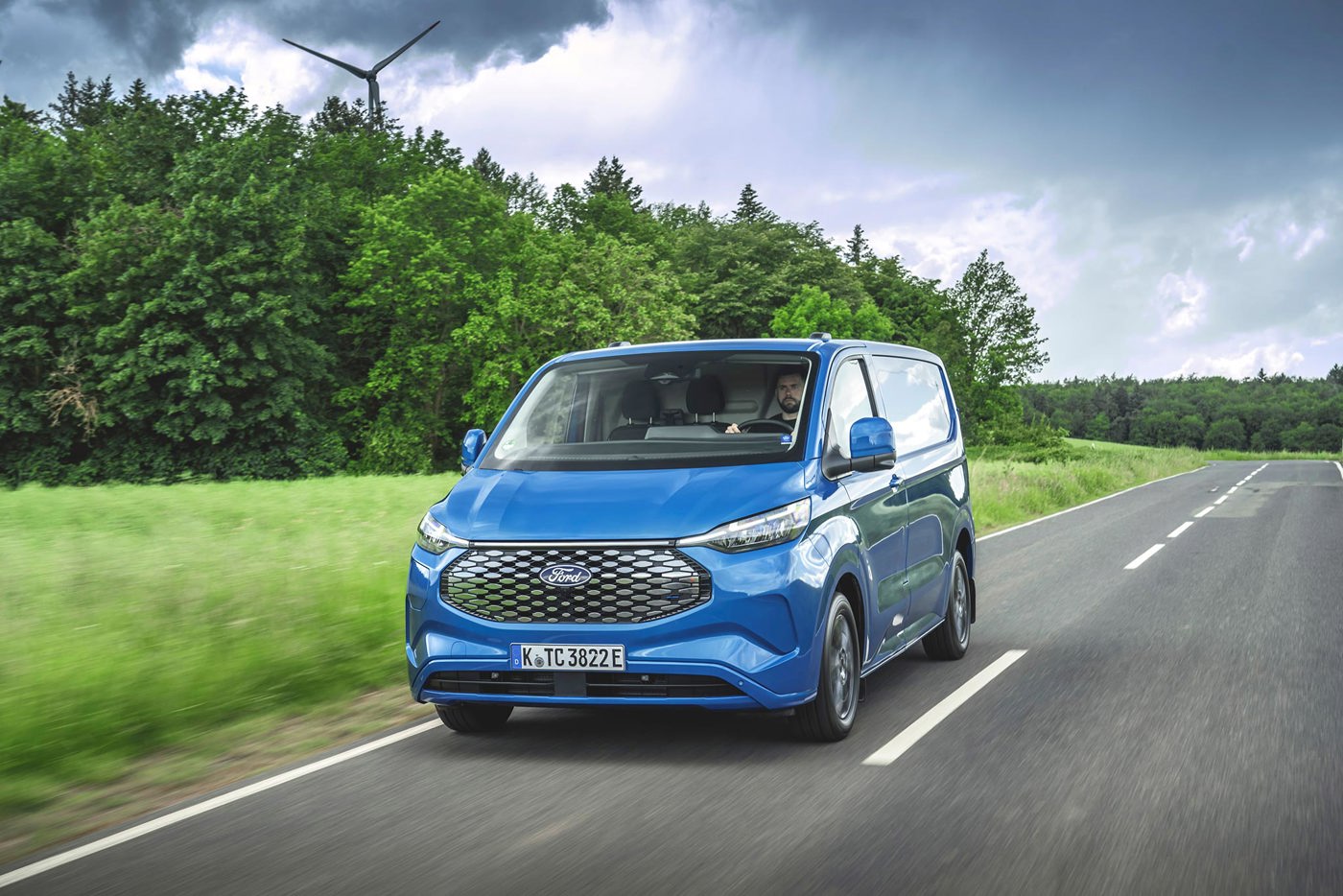
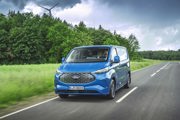
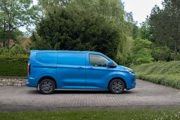

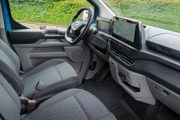


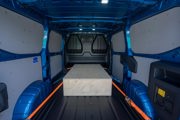

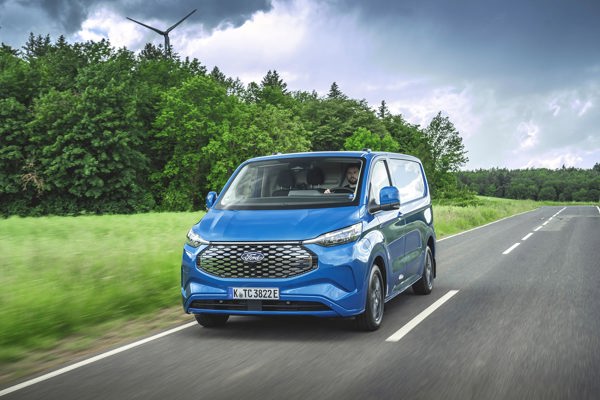
 Diesel
Diesel












